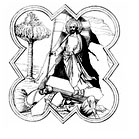
The Demise of the Parish Cemetery
THE CONSEQUENCES OF ANTI-SUBSIDIARITY IN THE CHURCH
When they write histories of the golden age of Catholic ethnic parishes in the United States, historians are wont to note that newly arrived immigrants quickly built a church and then a school. They often forget the third institution in which those immigrants invested: a cemetery.
Teresa Mull, writing in The Spectator (Sept. 24), asserts that cemeteries “saw their best days prior to 1900.” Her article, “The Problem Facing U.S. Cemeteries,” ran in the business section. Considering there’s no decrease in demand — the old joke remaining true that cemeteries are places where “people are dying to get in” — what does Mull mean? She means that the economics of cemeteries have changed for the worse and are becoming unsustainable.
Built into grave sales today in many states is a mandated fee for “perpetual care,” a sum that supposedly goes toward cemetery upkeep. Revenue from these fees is plummeting, with grave implications, especially for older cemeteries. Mull blames much of the drop-off on the growing popularity of cremation. Incinerating your loved ones usually removes the need for a grave. In any event, Mull’s Spectator article doesn’t tell the whole story.
Culture is upstream from both politics and economics, and we need to look at cemetery culture — including Catholic cemetery culture — to understand what’s going on.
In the heyday of the ethnic parish (the late 19th and early 20th centuries), cemeteries — like schools — were parish affairs. Just as there were parochial elementary and high schools, there were parochial cemeteries, usually not far from the parish church.
Those institutions are no longer typical. Already by the 1960s and 1970s, parochial high schools were being replaced by diocesan ones. By the 1980s, many parishes began consolidating their schools into a single city- or area-wide “Catholic school.” At about the same time, dioceses also got into the graveyard business big time.
Among the drivers of those transitions were personnel changes. High-school education required teachers with a greater degree of specialization in a single subject (e.g., mathematics or languages). The decline in religious vocations and, among those who remained, the abandonment of traditional teaching roles in favor of “social justice” roles affected that cadre.
You May Also Enjoy
This Faith has three basic dogmas: the primacy of desire, the creative energy of competition, and “nonjudgmentalism.”
Unionism is simply the principle that human beings working together may derive benefits from banding together in an organization, on the basis that “in union there is strength.”
A poor woman once told me that the Church “belongs” to her kind of people, not to them, the rich, the quite comfortable — appearances notwithstanding.

